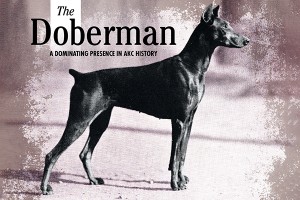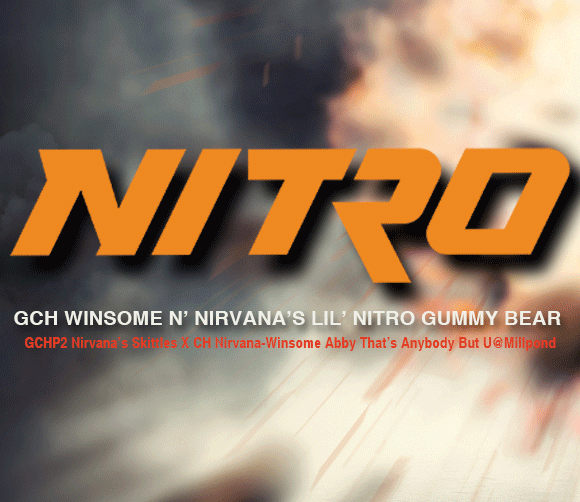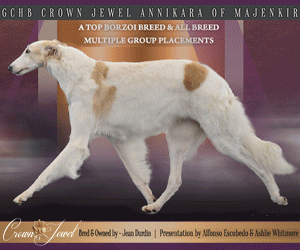The Doberman – A Dominating Presence In AKC History
Click here to read the complete article
276 – June, 2024
 By Amy Fernandez
By Amy Fernandez
Some breeds have become such a dominating presence in this sport that we are apt to forget that this wasn’t always the case. For example, the Doberman ring is truly a shark tank. Countless great dogs never get a second glance in such a hypercompetitive environment. It’s not the place for novices–to say the least. From a historical standpoint, that is remarkable. This is not only a relatively new breed genetically; its AKC success is a pretty recent phenomenon.
Recognized by AKC in 1908, the breed remained obscure for decades. Traditionally, breed popularity spread from Europe to Britain. However, Britain’s cropping ban derailed the Doberman’s show ring acceptance there. And although it developed a loyal American following by the time of AKC recognition, it was marginal compared to the massive popularity it enjoyed in Europe. Its first brush with celebrity came in 1929 when Herbert Hoover’s acquisition of a Doberman made headline news. More than a decade later, trainer Willy Necker began featuring five Dobermans in his popular traveling Canine Carnival. Their performances certainly showcased the breed’s athleticism and intelligence, but it wasn’t enough to trigger any spike in popularity.
In fact, when Ch. Ferry von Raufelsen of Giralda won Westminster 1939, it was the first time many Americans had even heard of the breed. There were a handful of established breeding programs in the US by that time. Both Ferry’s sire and dam, Troll v.d. Engelsburg and Jessy v.d. Sonnenhohe, had been imported previously. But overall, the Doberman was regarded as a specialized working dog, not your average pet. And Ferry’s brief, highly publicized career didn’t move the needle. American breeders continued to work on their bloodlines and they made progress without fanfare.
Dobermans began competing at Westminster in 1911 and managed to win their first group in 1925, so obviously breeders were doing something right. The breed consistently placed in the group and won several groups by the 1950s, but it remained compartmentalized as a specialized breed, which was probably for the best.
Click here to read the complete article
276 – June, 2024

Short URL: http://caninechronicle.com/?p=289481
Comments are closed











